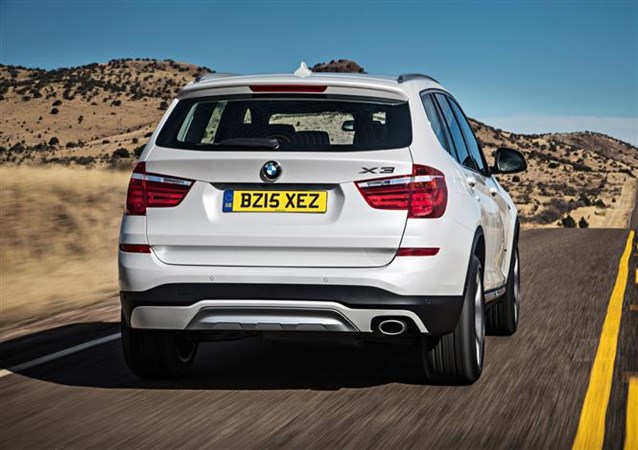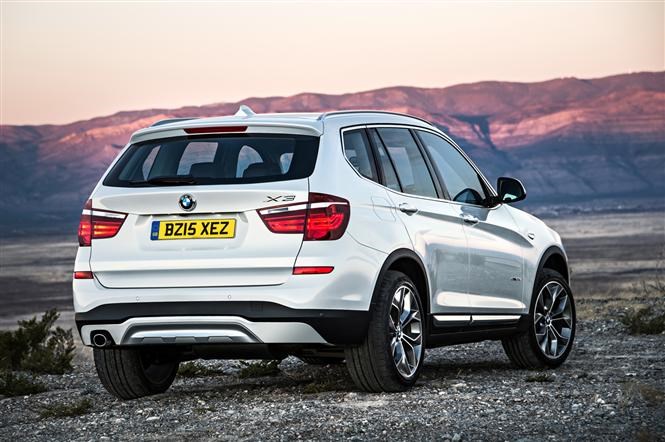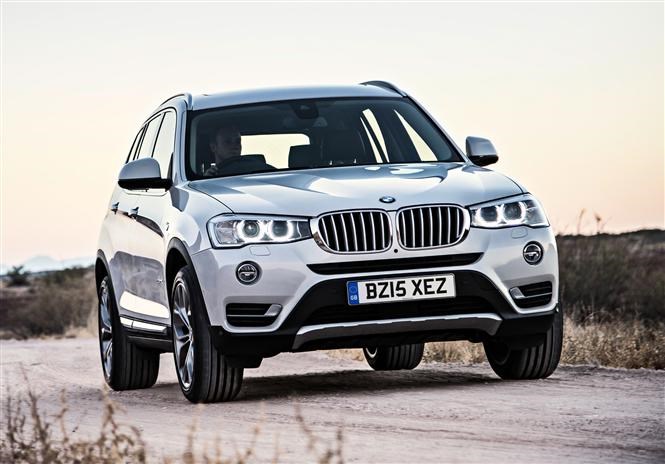The BMW X3 is one of many models in the German brand’s growing SUV line-up, competing for sales with the Audi Q5, Volvo XC60, Land Rover Discovery Sport and Mercedes-Benz GLC.
Launched in 2011, the X3 was facelifted in 2014 to bring it into line with newer BMWs, so it was treated to some styling tweaks, trim upgrades and more standard equipment.
We praised the X3 for its impressive performance and handling when it was launched, and the same rings true today – the X3 remains one of the best SUVs to drive. The range is diesel-only, all of which provide plenty of performance, but we’ll go into more detail on these later.

The X3 is the kind of car families will be looking to buy and it delivers plenty of interior space, a big 550-litre boot and a generous number of cubbyholes and storage areas throughout the cabin.
If you want something a bit more focused on style than space, the X3’s sister car – the X4 – is based on the same platform but with a rakish coupe-like body.
BMW X3 specification
There are three trims to choose from if you’re buying an X3 – SE, xLine and M Sport. All come with generous levels of standard equipment, so all you need to decide is how much you want to spend and what you want the car to look like. The X3 M Sport is the one to go for if you want sporty styling, while SE and xLine models focus more on comfort and luxury.
Picking the trim level
Kicking off the range is the SE. Standard kit comprises:
• 17-inch alloy wheels
• Dual-zone climate control
• Bluetooth phone connectivity
• Sat-nav
• Cruise control
• DAB radio
• Heated leather seats
• Front and rear parking sensors
• Electric tailgate
• Automatic lights and wipers
• Tyre-pressure monitoring
For £1,500 extra, xLine trim adds:
• 18-inch alloy wheels
• Aluminium-effect exterior trim
• Sport leather steering wheel
• xLine-specific interior trim on seats and sills
M Sport trim will appeal to those looking for the sportiest-looking X3:
• 19-inch alloy wheels
• Run-flat tyres
• Automatic transmission with paddles
• M Sport-specific front and rear bumpers
• M Sport sports steering wheel
• Sports suspension
• Sports seats
Options
We’ve already seen that the X3 comes with plenty of equipment, but it’s not uncommon for those buying premium cars to add some desirable optional extras.
There are many to choose from too, which can quickly hike up the price. Some are merely desirable, others will be genuinely useful and may well be worth adding – especially as most are available as part of a package comprising several features for a slightly reduced price.
One that’ll appeal to family buyers is the £1,450 Interior Comfort package, including electric front seats, extended storage and a through-loading system which allows you to slot larger items through the armrest in the rear seats. The panoramic sunroof makes the cabin feel airy, but at £1,190, it’s an expensive option to choose.
.jpg)
Those spending a lot of time behind the wheel may be swayed by the £900 Professional Media package. This includes upgraded sat-nav, real-time traffic information and a concierge service, connecting you to a dedicated team 24/7 who will help you find a hotel or restaurant and send details straight to the car.
The Visibility package adds adaptive xenon headlights, LED foglights and high-beam assistant for £1,105, while SE Plus (£2,130), M Sport Design (£1,645) and M Sport Plus (£2,640) packages add extras like a Harman Kardon stereo, xenon headlights and different alloy wheel designs to the standard models.
As with most new cars currently on sale, the X3 is available with a host of extra safety and assistance features. BMW has bundled them into either the £550 Active Security package, featuring a lane-departure warning system, Driving Assistant (city collision mitigation, forward collision warning and pedestrian detection) and Driving Assistant Plus package, which adds active cruise control on top of all the Driving Assistant features.
Engines
Buyers are well-catered for in terms of diesel engines in the X3 – there’s something for cost-conscious drivers and more enthusiastic drivers alike.
The most popular engine in the range is the entry-level 2.0-litre diesel, named xDrive20d. It produces 190hp and will go from 0-62mph in 8.1 seconds, so it’s certainly no slouch. It’ll return claimed fuel economy between 52.3 and 57.6mpg depending on the size of the wheels and the gearbox type, and emits 129 to 142g/km of CO2, so tax will cost you between £110 and £145 a year.
.jpg)
If you want more power, there’s a 258hp 3.0-litre diesel badged xDrive30d. Like the xDrive20d, it’s available in all trim levels, with an eight-speed automatic gearbox. It cuts the 0-62mph time down to just 5.9 seconds, while returning 46.3 to 49.6mpg, again depending on the wheel size. An X3 with this engine will cost £145 to £180 a year to tax.
If you want some serious performance, the xDrive35d is the one to go for. It’s only available in M Sport trim and sits at the top of the range. It boasts a whopping 313hp and is capable of sprinting from 0-62mph in just 5.3 seconds, but BMW claims it’s capable of returning 47.1mpg while emitting 157g/km of CO2. Of course it’s unlikely you’ll achieve this kind of economy, but this model is the closest you’ll get to a high-performance M version of the X3.
If you’re looking at an X3 as a company car, all models fall between 28 percent and 31 percent BIK rates.
Verdict – which X3 should you buy?
It’s unlikely most people need the power of the two faster X3 models – they’re also expensive to buy – so we’d keep things simple and go for the X3 xDrive20d M Sport.
The 2.0-litre diesel is powerful and efficient, striking a great balance between performance and economy that’ll appeal to most buyers.
M Sport is the most popular trim levels for buyers and it also has impressive residual values – our chosen spec retains around 50 percent of its original value over three years and 36,000 miles.

M Sport trim is the most expensive, but we also think it’s the most desirable thanks to sporty styling and a few extra features over SE and xLine models. It also sits in between the equivalent Audi Q5 and Mercedes GLC in terms of price, but offers the most involving drive of the three.
Buyers considering long-term running costs can also opt for one of two servicing packages. The £525 BMW Service Inclusive package covers servicing costs for 5 years and 50,000 miles, while the £1,470 Service Inclusive Plus package covers both servicing and maintenance costs for 5 years and 50,000 miles.
Now take a look at these:
New safety kit to watch out for in 2016
Dawn of the SUV age: is it game over for hatchbacks?





.jpg)

.jpg?quality=50)